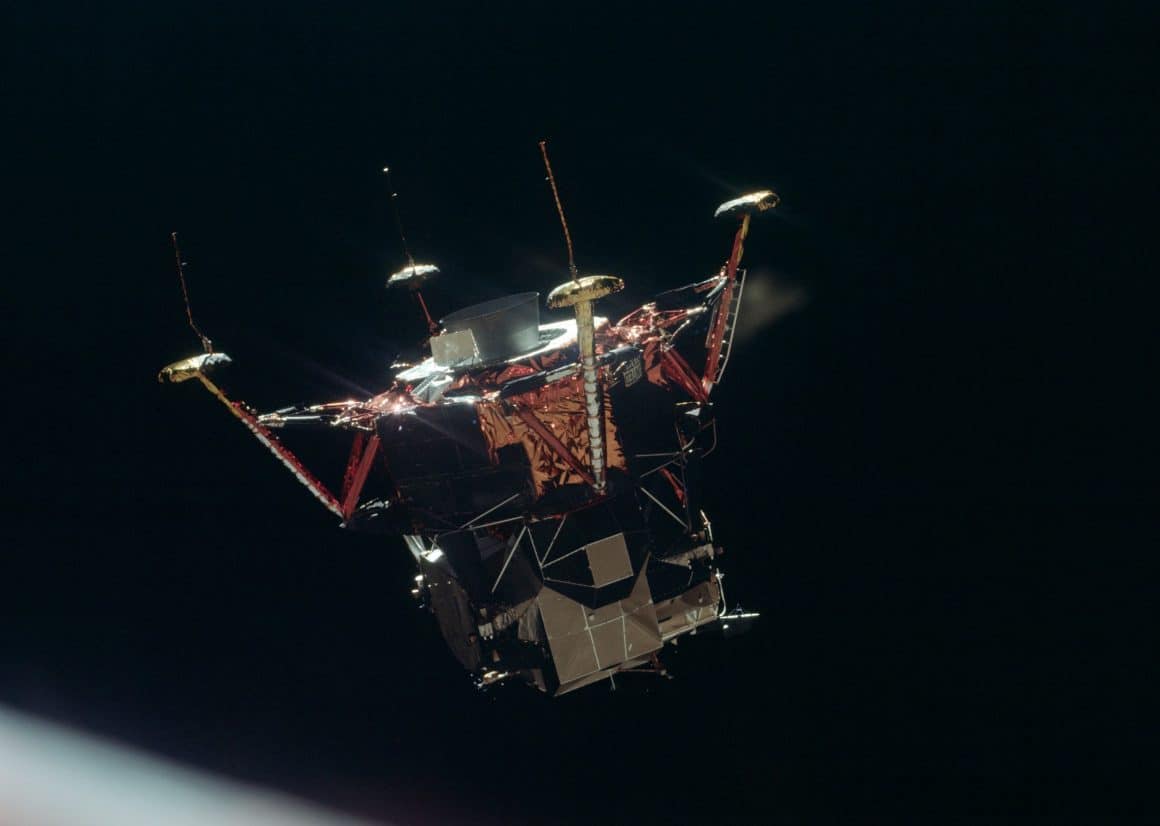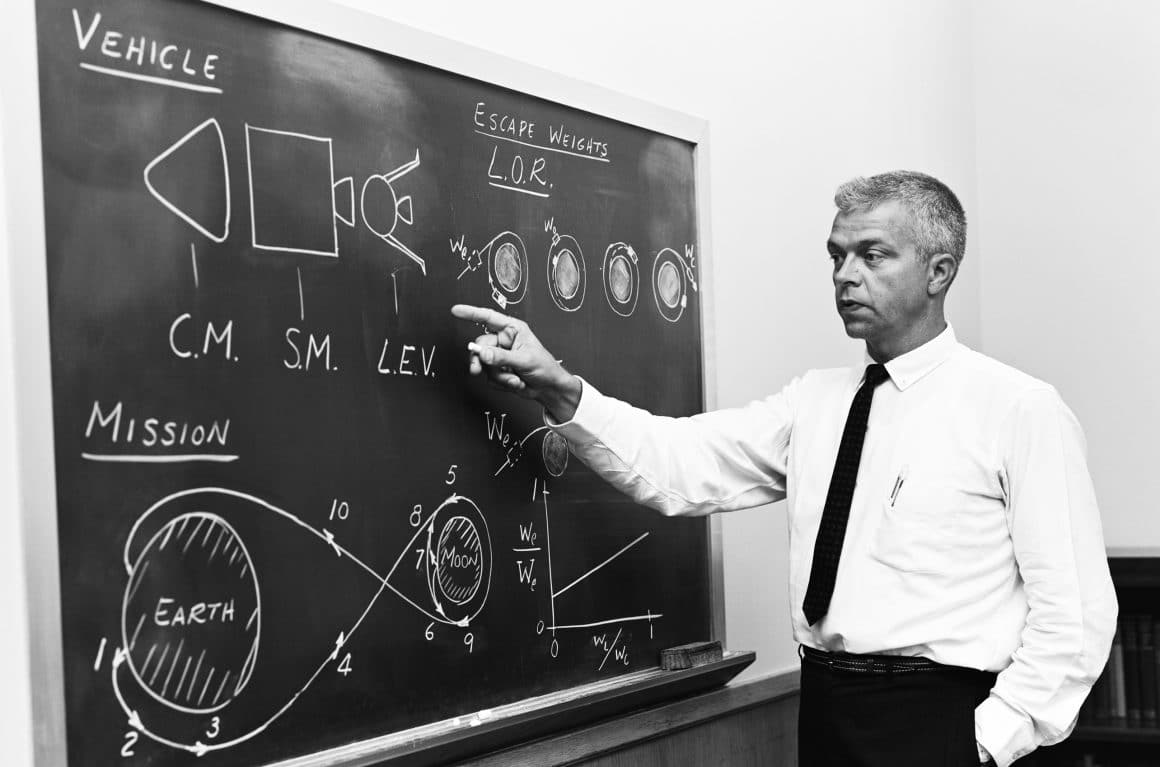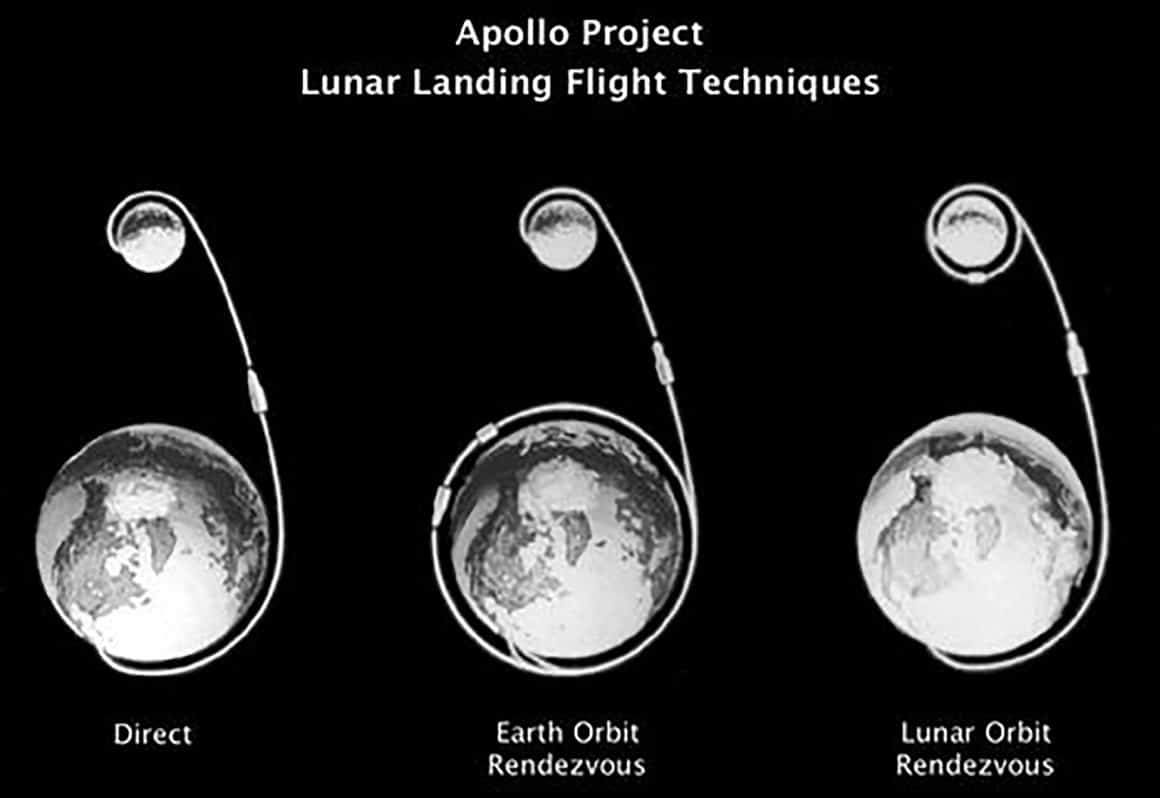CAPE CANAVERAL, Fla. — In the months leading up to America’s first manned space flight, NASA leaders met for a round table discussion of how to land a man on the moon.
In February 1961, members of the Space Task Group met in Washington, D.C. with engineers to discuss solutions. The group was headed by Robert Gilruth and lead Mercury spacecraft designer Maxime Faget. Wernher von Braun, the father of American rocketry, also attended the meeting.
As the discussion progressed past the midway point, an unknown engineer stood up in the smoke-filled room. He then explained his theory for how America should send astronauts to the moon.
A NASA Engineer’s Cost Efficient, Time Saving Plan For Moon Landing
NASA Langley Research Center engineer John C. Houbolt began to explain an unheard of theory known as Lunar Orbit Rendezvous. His plan would send two spacecraft into lunar orbit, land one on the Moon, and later have the two redock and return to Earth.
Houbolt served as Chief of the Theoretical Mechanics Division at Langley, and now he was up to bat in the biggest game of his life.
Lunar Orbit Rendezvous (LOR) was an unknown theory Houbolt had designed five months earlier. He was one of six members of a committee to study problems associated with rendezvous while constructing a space station platform.
In August 1960, the committee began associating the rendezvous of a space station with the rendezvous and landing on the moon. Houbolt used the blackboard to chalk out several designs involving rendezvous for a flight to the moon.
The practical engineer loved the simplest, most cost-efficient method—LOR. As Houbolt spoke of his LOR theory to von Braun and the Space Task Group, it began to fall on deaf ears.
Shouts of “misleading information” from Faget and a head-shaking “no” from von Braun concluded the then 41-year-old engineer’s address to his peers.
Von Braun and several others agreed with a plan known as Earth Orbit Rendezvous, which would see two Saturn rockets launch. One would carry a spacecraft and the other a fuel supply craft into Earth orbit.
The pair would then rendezvous. The Apollo craft would travel to the moon, land, and return as a single craft. Another plan that was being accepted was the direct ascent to the moon.
“The plan was to send a vehicle the size of Atlas to the moon with absolutely zero help and land it backwards,” Houbolt told NASA’s Langley years later, “It can not be done.”
A large rocket, mightier than the Saturn 5, would launch an Apollo craft to the moon. Apollo would then separate in lunar orbit from the rocket and land.
Several weeks after President Kennedy challenged America to land a man on the moon before 1970, NASA administrator James Webb let it be known that NASA was steering Apollo as an EOR mission to the moon, with the direct ascent as a backup choice for landing.
The LOR plan was swept under the rug by a few key NASA managers throughout 1961, except for Max Faget. He began to realize LRO as a better option. Houbolt continued to lobby for his proposal.
Houbolt wrote two letters to NASA associate administrator Robert Seamans asking for support of his plan. By Thanksgiving of 1961, Gilruth and Langley, along with NASA headquarters, approved it as a time—and money-saving option.
A few months later, Von Braun and Marshall approved Houbolt’s idea. Plans were drawn up to build a secondary spacecraft that would land on the moon—the lunar excursion module.
Houbolt single-handedly saved American taxpayers billions of dollars in fuel and rocket costs. He also trimmed the time needed to build the multiple rockets required by EOR by two years.
Kennedy’s challenge survived his presidency. Not just one, but two crewed lunar landings occurred during 1969.
History Also Supported Houbolt’s Plan
Little did Houbolt know that one year earlier, engineers at the Vought Astronautics Division near Dallas discussed their LOR theory with NASA. NASA had also ignored Vought’s engineers.
A few years later, Houbolt learned of Russian mechanic Yuri Kondratyuk, who formulated ideas related to space flight and LOR. Kondratyuk’s designs and notes were made while he was a soldier during World War I. They never reached Russian scientists following the Second World War.
As Houbolt watched Apollo 9 lift off in 1969 with the first lunar module, he felt emotion. His thoughts raced through his own journey and his contribution to America’s space flight.

Two months later, the now-former NASA engineer sat in the visitors’ section of Houston’s Mission Control. Apollo 11 lunar module Eagle had just left lunar orbit to perform the first landing by Neil Armstrong and Edwin Aldrin.
“When the landing took place and the touchdown was made, all of us stood up and started clapping,” Houbolt recalled during a NASA interview. “But at the same time, we were shh, shh, because we didn’t want to miss a fraction of a second of history being made.”
Houbolt added, “Von Braun sat in front of me, and he made the OK sign and said, ‘Thank you, John.’ That was one of the biggest rewards I’ve ever had.”
(Charles A. Atkeison reports on aerospace and technology. Follow his updates via social media @Military_Flight.)


